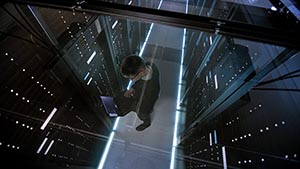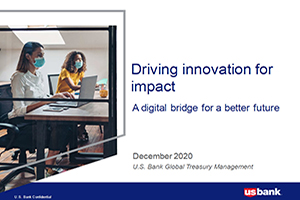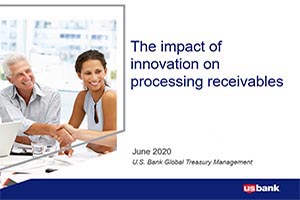Who’s leading the charge on testing blockchain technology?
Businesses and governments around the world are actively evaluating the potential of blockchain technology. The demand for a decentralized system of data management has also intrigued technology companies like IBM, SAP, Cisco, and Walmart. For them, blockchains can help streamline everything from supply chain data to company device management.
Banks and financial institutions are also testing blockchains for use cases like trade finance, capital markets, syndicated loans, freights logistics and supply chain management, payments, digital assets, compliance and fraud reduction. U.S. Bank is part of a 400+ member consortium run by technology firm R3, the largest blockchain network in the world comprised of banks, regulators, cloud providers, global systems integrators, independent software vendors and tech firms.
Why should you use an enterprise blockchain platform?
In short: For the potential to make payments faster, more reliable and safer. Without the need for manual processing or a centralized clearinghouse, your payments could be processed faster and less expensively. It’s a scenario that carries many tangible benefits for an organization’s bottom line.
In real estate, for example, sellers and buyers could use a specialized blockchain for all transactions related to a property. Rather than paying an intermediary management company, the two parties set up the ledger on agreed terms. These “smart contracts” could bring in data from a variety of connected devices — like environmental sensors, wearable trackers, and industrial robots — and adjust payments if issues aren’t resolved.
Why decide not to adopt blockchain technology?
Blockchains, while brimming with potential, must show they can justify the cost and resources. We’ve been able to prove that the technology performs as intended during tests and foresee low and medium scale application of blockchains in a few years, as more companies test the service.
Any application of blockchain technology would require changes on the regulatory and IT sides, too. While “permissionless” ledgers such as Bitcoin exist for direct peer-to-peer transactions, financial institutions use a “permissioned” approach that require approval for any actor included in the process. You also need to account for IT development and storage costs with ledger data.
The blockchain hype is real, but tenuous
Gartner recently published an updated version of their Hype Cycle for Blockchain Technologies, and blockchain technology may hold promise outside of financial services too. Though expectations for the technology have dimmed somewhat over the last two years, eventually, these technologies will find their place in the evolving transactional marketplace. For now, blockchains are enjoying widespread attention. We should know in a few years if that attention is well deserved.
Chris Swanson is a technology and business strategist currently leading the U.S. Bank blockchain and blockchain and cryptocurrency practice. He manages business line and developer resources in proof of technology and business value testing.




















































